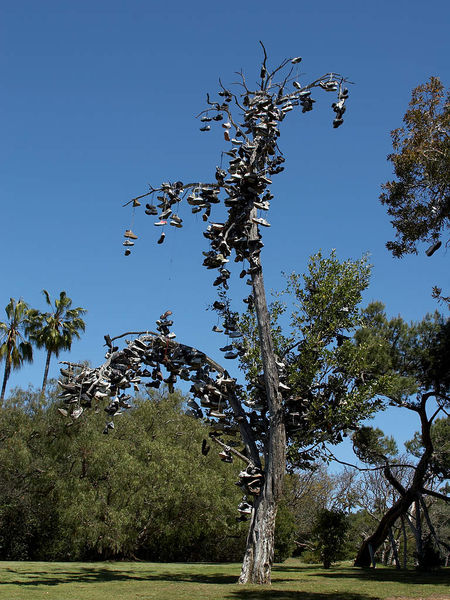
The “shoe tree” of Morley Field, San Diego. There are at least 76 such trees in the United States. No one’s quite sure how they get started. What will future civilizations make of this?

The “shoe tree” of Morley Field, San Diego. There are at least 76 such trees in the United States. No one’s quite sure how they get started. What will future civilizations make of this?
In 1979 University of Minnesota psychologist Thomas J. Bouchard studied a pair of twins, Jim Lewis and Jim Springer, who had been separated at birth. Here’s what he found on interviewing them at age 39:
“Our findings continue to suggest a very strong genetic influence on almost all medical and psychological traits,” Bouchard said. After an extensive study of separated twins, he concluded that shyness, political conservatism, dedication to hard work, orderliness, intimacy, extroversion, conformity, and a number of other social traits are largely heritable.
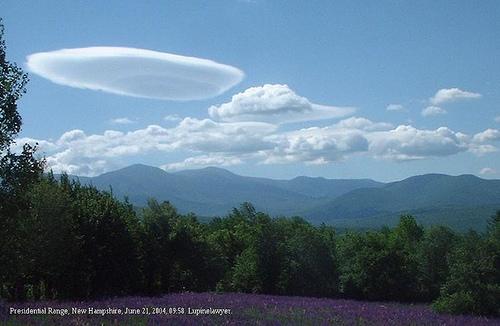
Because they’re stationary and have a smooth, saucerlike shape, lenticular clouds are often reported as UFOs. These photos were taken in New Hampshire (above) and New Mexico.

In the 1990s, residents of Taos, N.M., and Kokomo, Ind., began to report an invasive low-frequency noise, which they likened to a distant idling diesel engine. Others have since reported the sensation elsewhere, especially in Europe. Strangely, the sound is often worse indoors, and ordinary microphones don’t detect it.
Possible explanations have included everything from meteors to submarines, but so far there’s been no large-scale investigation. For now the phenomenon is simply called “the Hum.”
When he wasn’t escaping straitjackets, Harry Houdini spent a lot of time debunking spiritualists.
Shortly before his death, he made a pact with his wife, Bess: If possible, he would contact her from the other side and deliver a prearranged coded message.
When he died, Bess lit a candle beside his photograph and kept it burning for 10 years, holding séances every Halloween to test the pact. Harry never spoke.
In 1936, after a final attempt on the roof of the Knickerbocker Hotel, Bess put out the candle.
“Ten years is long enough to wait for any man,” she said.
In his 1647 Del Luce Animalium, Danish physician Thomas Bartholin noted a great lost opportunity for animal husbandry.
In France’s Montpellier market, he wrote, a chicken had appeared whose feathers glowed. Killed for closer study, the cock “shone on all parts of its body with a remarkably strong light.”
At the same time, he said, an Italian hen from Montebello “shone like a ball of white fire.”
It was a pity, Bartholin noted, that the two birds couldn’t be bred together, “for we might then have obtained a breed of incandescent fowls.” And saved money on candles.
The Bavarian village of Oberammergau has a special deal with God. While the bubonic plague was ravaging Europe, the town’s citizens vowed that if they were spared they would perform a play every 10 years depicting the life and death of Jesus.
God, apparently, accepted. The death rate among adults rose from 1 in October 1632 to 20 in March 1633, but then it dropped again to 1 in July 1633.
True to their word, the villagers staged a play in 1634, and they’ve done so every 10 years ever since.
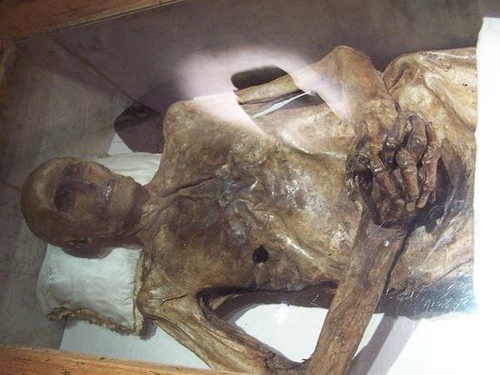
Christian Friedrich von Kahlbutz is looking remarkably fit for his age. The Prussian knight died in 1702 and his body hasn’t decayed.
No one knows why. He wasn’t embalmed. A legend says it’s God’s punishment for an oath he broke while living. Scientists think he lost a lot of blood before dying and that the local soil lacked materials that would promote decay. But that doesn’t explain why other bodies nearby did rot.
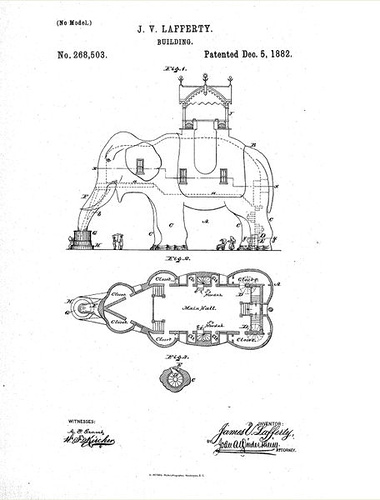
The largest elephant in the world is made of wood and tin sheeting. “Lucy” was built south of Atlantic City in 1882 by James V. Lafferty, who hoped to attract tourists and sell real estate.
Lafferty saw big potential in “zoomorphic architecture,” apparently. He got an exclusive patent on animal-shaped buildings, and soon surpassed Lucy with an Elephantine Colossus at Coney Island. At 12 stories tall, it was twice Lucy’s size, with a cigar store in one leg, a dioramic display in another, hotel rooms in the body, and an observation area at the top, with panoramic views of the sea.
Sadly, the Elephantine Colossus was destroyed by fire in 1896, but Lucy herself still stands, and has served as a restaurant, a business office, a cottage, a hotel, and a tavern. Today she’s a national historic landmark.
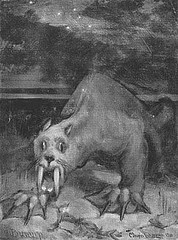
If you visit Australia, beware the bunyip, a bizarre creature with a horse’s tail, flippers, and walrus tusks. Bloodcurdling cries can be heard at night as it devours its prey, and it’s particularly fond of human women.
Does it really exist? Who knows? Australia’s real fauna is so strange that European settlers couldn’t tell the difference. In 1846 a peculiar skull was found on the banks of the Murrumbidgee River in New South Wales, and the Sydney Morning Herald reported that “almost everyone became immediately aware that he had heard ‘strange sounds’ from the lagoons at night, or had seen ‘something black’ in the water.” In the district of Greta, Victoria, residents heard a loud booming sound coming from the local swamp, but search parties found nothing. They finally drained the swamp, and the sound ceased.
Okay, maybe there’s no bunyip, but that’s the not the end of your worries. Australians also warn of the drop bear, a sort of plunging koala; the hoop snake, which rolls like a wheel after its prey; and the yowie, which is either an ant/lizard or a giant ape. Pack a flashlight.